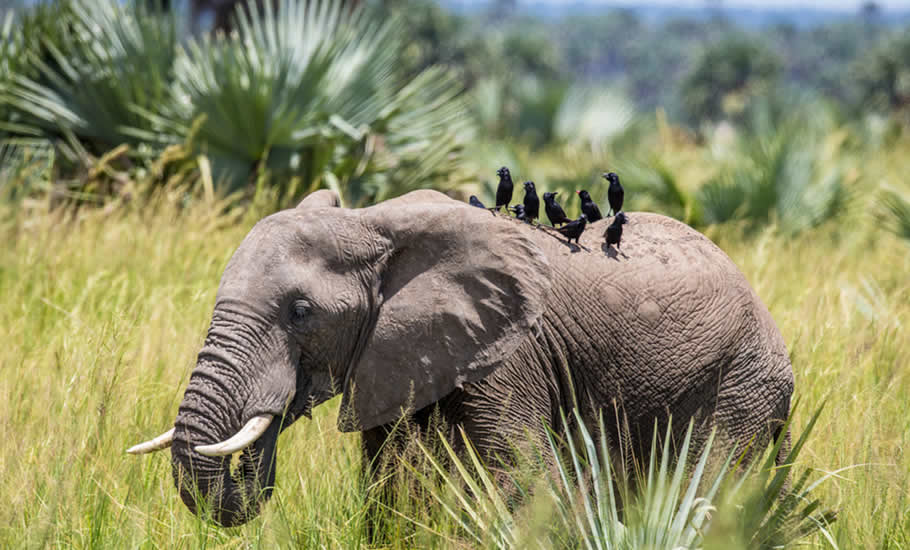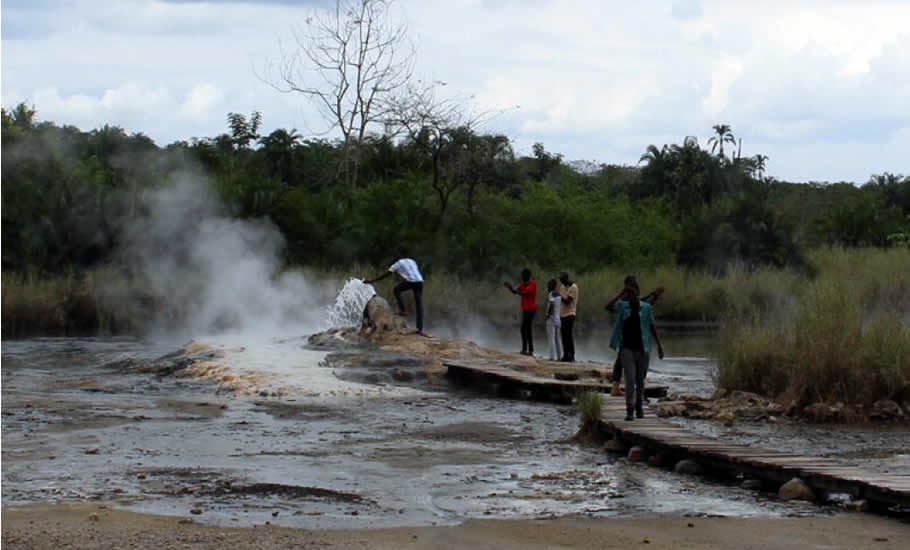Semuliki national park is situated in the Western part of Uganda in the district of Bundibugyo in Mwamba County at the border of Uganda and the Democratic Republic of Congo. Semuliki National Park covers an area of 220 square kilometers and stands at an altitude ranging from 670 meters to 760meters above sea level. Semuliki National park borders Lake Albert in the north and Mount Rwenzori in the South-Eastern direction. The prominent river Semuliki and River Lamia are both located at the park boundaries or borders.
The topography of the park is generally flat and this makes it susceptible to floods especially during the rainy season when rivers lamia and Semuliki receive heavy rains. The park started as the Semuliki forest reserve and in the year 1932 and was elevated to a national park in the year 1993 mainly to reduce the illegal forest activities of deforestation which were rampant by then.
Semuliki National park bears the Semuliki wildlife reserve which is adjacent to the park. The park is covered by the sprawling forests of Ituli in the Congo basin and this made this park harbor some of the tree and bird species which are found as well in the Central African Republic as the park shares the conditions similar to those of Central African Republic countries.
The park has recorders birds equivalent to 441 and this has made it to be one of the top birding destinations in Uganda and Africa as a whole. The majority of the bird species found in
Semuliki national park are forest birds which among others include white-tailed hornbill, Dwarf Honeyguide, and blue-headed flycatcher. Besides the birding species, the park also features over 53 mammal species which include ward antelopes, bush babies, leopards, forest buffaloes, white-bellied duikers, Uganda kobs, waterbucks, warthogs, bats among others. The park also harbors over 8 species of primates including blue monkeys, chimpanzees, olive baboons, De Brazzas monkeys among others. Over 300 species of butterflies can also be spotted here in Semuliki National park.
The big animals within the park such as buffaloes and elephants continue to be threatened by the poachers who still hunt them for th6e wild meat and ivory. The forest still provides the medicinal herbs to the adjacent communities. However the government of Uganda under the management of Uganda Wildlife Authority has continued to engage the local communities in conservation efforts of the park by creating the benefits of the park to them and how best they can be involved within the park. The major tribes of people living around Semuliki National Park include the Bakonjo and the Bamba. There is also another group of people well known as Basua who still live as gatherers and hunters in the forests. Similar to Batwa, the Basua have been evicted from the forests especially when it was turned into a national park and they have found life hard to adapt to normal life, and that why they still find it easy to encroach on the forests.





